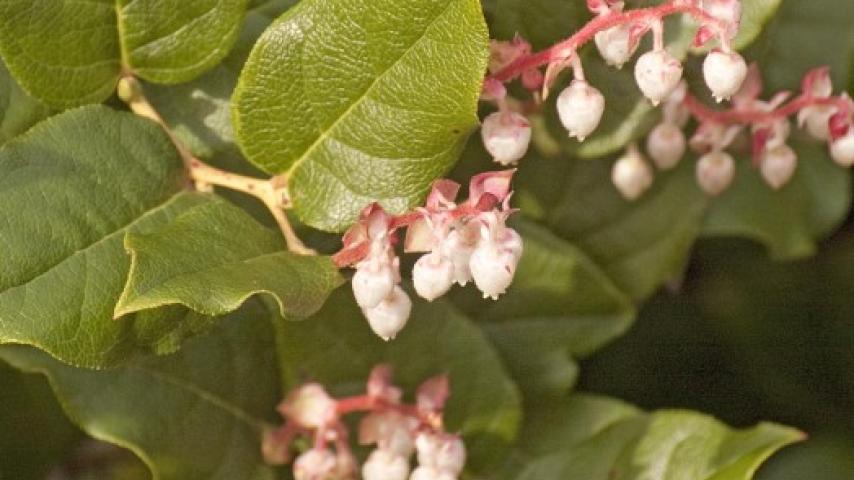Salal (Gaultheria shallon)
Salal is easily recognized by its low growth form, typically only up to a meter in height; leathery, shiny, deeply veined leaves; and conspicuous inflorescences with white urn-shaped flowers hanging in a row.

KINGDOM Plantae - PHYLUM Anthophyta - CLASS Eudicotyledonae - ORDER Ericales - FAMILY Ericaceae
The stems and bracts turn pink, advertising to birds the presence of developing fruits, and then the berries turn dark purple.
Salal is endemic to Pacific Northwest coastal forests, where it is one of the most ubiquitous plants in the understory. Like other members of the heather family, it does very well on poor soils. The Pleistocene glaciers that repeatedly scoured the region deposited soil that was relatively nutrient-free, so relatively poor soils are a feature of many of these forests. Most species in this family have so-called ericoid mycorrhizae, root fungi that enhance the taking up of limited nutrients.
Also, most members of the heather family are evergreen, and evergreen plants are favored in this region of cool, wet winters and warm, dry summers. They are able to photosynthesize on both warm winter days and dry summer days because of their winter-persistent, drought-resistant leathery leaves. This species is very shade-tolerant, another feature that favors it in dense forest habitats.
Because of their abundance, Salal berries were a very important food to Native Americans. These somewhat mealy fruits are not the first choice of most who try them nowadays, but they are good for jams and jellies. Interestingly, the fruit is made up of thickened sepals that enclose the seeds.
An important present-day commercial use of Salal is as a leafy background for floral arrangements. This plant was introduced to Europe long ago by David Douglas, the plant explorer, and it is popular in gardens there. Where it has escaped into the wild, it grows rampantly and has become somewhat of an invasive weed, colonizing acid soils and choking native vegetation. It is often controlled by cattle browsing in that situation.

